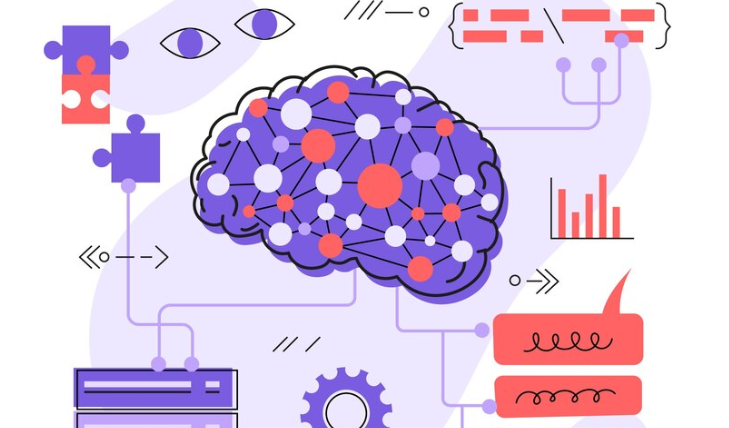In a world increasingly shaped by data, automation, and recommendation engines, the concept of wonder feels almost rebellious. Wonder is unstructured. It’s the awe sparked by the vastness of space, the beauty of nature, the unpredictability of creativity. It thrives in ambiguity, flourishes in the unknown, and often escapes logical explanation. And yet, as algorithms evolve beyond simple utility, a new question emerges:
Can we design algorithms that create—not eliminate—wonder?
What Is Wonder?
Wonder is not just surprise or curiosity. It is an emotional and cognitive state that combines awe, openness, and exploration. It prompts questions instead of answers. It slows time. It opens mental doors to experiences that feel larger than life or beyond immediate understanding.
Traditionally, algorithms have been built for optimization: faster routes, better recommendations, more efficient processes. But wonder is not efficient. It’s not optimized. It’s messy.
So how can the structured logic of algorithms create a space for something as ineffable as wonder?
The Risk of Over-Optimization
Algorithms today excel at personalization. They learn your preferences, anticipate your behavior, and filter out what’s irrelevant. But this hyper-efficiency comes at a cost: serendipity is sacrificed, surprise is minimized, and the unfamiliar is often filtered out.
From music to news to travel suggestions, we are fed what we are likely to enjoy—safe, familiar, predictable. But wonder thrives outside the expected.
The algorithmic world often collapses potential futures into narrower paths. If we’re not careful, we replace moments of unexpected beauty with an infinite scroll of comfort zones.
Designing for Wonder: A New Algorithmic Ethic
To create wonder through code, we need to invert the logic of most algorithms. Instead of filtering out anomalies, we must seek them out. Instead of delivering answers, we should provoke questions. Here’s how.
1. Embrace the Edge Cases
Most algorithms are trained to smooth over outliers. But edge cases are often where wonder lives. Whether it’s a rare celestial event, a forgotten language, or a bizarre art form—outliers ignite imagination.
We can build systems that highlight anomalies rather than hide them. Imagine a search engine that, instead of showing what everyone else clicks, surfaces the least explored results.
2. Curate Curiosity, Not Just Relevance
Recommendation engines prioritize what’s most relevant. But wonder isn’t always relevant—it’s arresting, confusing, or deeply surprising.
Instead of just showing you similar movies, songs, or books, what if a platform occasionally suggested something wildly different—but with a subtle connection? A spark of thematic dissonance that provokes curiosity.
3. Introduce Uncertainty
Most digital systems strive for clarity and control. But wonder is born in uncertainty.
We can design algorithms that invite ambiguity. Think of interactive fiction, generative art, or AI that tells open-ended stories. These are systems that create more questions than conclusions.
4. Temporal Distance and Delay
Wonder often needs time to unfold. Instant delivery and real-time feedback leave little room for anticipation. What if certain features were delayed or time-released—not to frustrate, but to let expectation grow?
Games, art exhibits, and even email newsletters could use temporal algorithms to create rhythms of revelation.
5. Design for Discovery
Platforms like Wikipedia or The Library of Babel simulator offer experiences of endless exploration. Each click leads deeper into the unknown. These are maps without fixed destinations, and they are essential architectures of wonder.
Letting users wander, get lost, and discover content without a clear end-goal is an underrated form of algorithmic design.
Examples of Wonder-Oriented Systems
- Google Earth’s “Voyager” mode: Encourages unexpected virtual travel across the planet.
- Oblique Strategies by Brian Eno: An analog algorithm of creative prompts to break routine thinking.
- AI-generated poetry and art: Not meant to be perfect—meant to be strange.
- Museum algorithms: Some institutions now use AI to link ancient artifacts with contemporary objects, creating wonder through contrast across time.
Why Wonder Matters
Wonder is not just poetic fluff—it has practical benefits:
- It fuels learning by opening the mind to new information.
- It deepens empathy, as it often involves looking at something unfamiliar or vast.
- It expands creative thinking by disrupting linear logic.
- It cultivates presence, anchoring us in the here-and-now through intense experience.
In a time of constant distraction, wonder can be an antidote—offering moments of reflection, awe, and inspiration.
Conclusion: Algorithms as Portals
Instead of seeing algorithms as cold, mechanical tools, we can begin to see them as portals—gateways to deeper, richer, more mysterious experiences. Designing algorithms for wonder doesn’t mean sacrificing intelligence or utility; it means redefining what intelligence is for.
We already have algorithms for attention, engagement, and profit. Maybe it’s time to build algorithms for amazement.
Because in the end, the best technologies won’t just serve us—they’ll surprise us.


